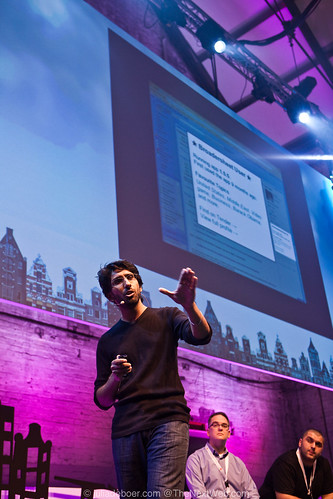A Privacy 9-11 Could Derail Social
Each year, come the first week of September, I deliberately seek out the most horrific footage from September 11th that I can find. I watch videos of the second plane hitting the World Trade Center at full speed and of desperate workers leaping to their death.
As a lifelong New Yorker, this is my way of coping with the tragedy. I purposefully make myself feel uneasy to remind myself that if we get too comfortable, we will forget and it will happen again.
Making a connection between a global tragedy like 9/11 and digital privacy may seem like a leap, but I am going to try. Hopefully you'll bear with me. My apologies in advance.
Flashback to early 2001 and you might recall that America was blissfully ignorant about our national security. Terrorism was something that happened elsewhere, never on our shores. It didn't enter our mind such an event could happen here until a few dozen suicidal extremists found a weak link in our system, commandeered our airspace with simple box cutters and murdered thousands of innocent people. They forced us to think the unthinkable.
Today I have an similar uneasy feeling about social networking and, to some degree, cloud computing. I believe that a Privacy 9-11 looms. I don't have evidence to support it. All I have is a bad vibe that too many people are apathetic about securing their privacy and this creates lots of weak links waiting to be exploited with digital box cutters.
The risk of a Privacy 9-11 is not rooted in technology. Rather, it's about sociology.
Google, Facebook, Twitter, Amazon and others have hardened technological defenses that protect our privacy. My concern is user apathy. Too many people today have a free-spirited attitude about their privacy. To be sure, there are lots of people who are paranoid. But we are outnumbered.
Anyone in security will tell you that a good defense is only as strong as the weakest link in the chain. Net, no matter how hardened our technological defenses are, it's my bet that somewhere someone will suffer a major privacy leak that impacts millions, sends shock waves through our system and makes us feel less secure than we did before. Such an event could slow interest in social networking and derail its marketing potential.
Perhaps this event is years away. Maybe it is completely far fetched. What's certain, however, is that as our once-analog social lives become increasingly digitized, now is the time for leaders to table the issue. Marketers, consumers, government and (not least of all) the platforms - all of whom have much at stake here - must work together to ensure that we are doing everything possible to protect and defend the digital privacy of our netizens.
Right now, we're not.
The risk of a Privacy 9/11 - a cataclysmic event that exposes the private information of millions of people - can be prevented if we act. Privacy, like terrorism, is something many don't think about until they have to. Some are doing an exemplary job of showing people just how their data is being used. Others - marketers included - need to go to the same lengths.
Consider Amazon.com, for example. The e-commerce giant doesn't rely on Facebook's arcane permissions screen to explain what data they share with your friends if you opt into their new social sharing features. Forrester analyst Auggie Ray points out that Amazon tells consumers in detail what will/wont be shared and the benefits in opting in.
Much the same, Google last week simplified its privacy policy across all of its sites in an effort to make them more user-friendly. It also maintains a Dashboard that every user can look at to see just how much or little of their data is on Google's servers.
Finally, perhaps stung by prior criticism, Facebook too recently simplified its privacy controls. More importantly they gave users the ability to monitor for suspicious logins and even log out of Facebook remotely.
Amazon, Google and Facebook should be lauded for educating consumers. They see consumer privacy and security as a mutual responsibility - which it is. But this is only the beginning.
The next step is for marketers, government, media and platforms to stand together in shaping standards in how we educate the public about the risks of our increasingly socially connected world - and in setting behavioral norms. For example, a study released by Georgia Tech found that passwords today should be a minimum of 12 characters . Too few sites mandate such lengths. A coalition could change this.
The time to prepare for a Privacy 9/11 is now - even if it means that we might make some people uneasy. It's for everyone's own good and it all starts with education.








 Young Urban Professional
Young Urban Professional

